
- Appointments
- Awards
- Bills & Acts
- Books & Authors
- Banking and Finance
- Business and Economy
- Committees
- Deaths
- Defence
- Environment
- Important Days
- International
- Miscellaneous
- National
- Resignations
- Reports
- Regional
- Sports
- Science & Technology
- May 2019 - Exams Resources
- Current Affairs - Quiz
- Current Affairs - Test
- Current Affairs - PDF
Current Affairs May 2019 - Defence
1 - MoD awarded GRSE Rs.6,311 crore project to build 8 ASWSWC
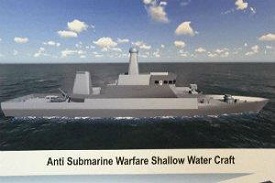
The Defence Ministry has awarded a contract of worth Rs.6,311 crore to Garden Reach Shipbuilders & Engineers Limited (GRSE) to build eight anti-submarine warfare shallow watercraft (ASWSWC) for the Indian Navy.
As per the agreement, the first ship is to be delivered within 42 months from the date of signing of the contract and subsequently, two ships are required to be delivered per year. The eight vessels are to be delivered between 2022 and 2027.
The vessels are equipped with highly advanced state-of-the-art integrated platform management systems including propulsion machinery, auxiliary machinery, power generation, and distribution machinery and damage control machinery, etc.
Anti Submarine Warfare Shallow Water Craft
Name: ASW-SWC
Builders: Cochin Shipyard, GRSE
Operators: Indian Navy
Preceded by: Abhay class
Planned: 16
The ASW-SWC corvettes are anti-submarine warfare vessels ordered for the Indian Navy from Cochin Shipyard (CSL) and Garden Reach Shipbuilders & Engineers (GRSE). They are in the 700-ton range and will replace the Abhay-class corvette currently in service. The Indian Ministry of Defense (MoD) cleared the acquisition of 16 shallow water anti-submarine vessels, to replace Russian-built Abhay-class corvettes commissioned in 1989 and 1991.
GRSE's projects
The 100 warships built by GRSE so far range from Advanced Frigates to Anti-Submarine Warfare Corvettes to Fleet Tankers, Fast Attack Crafts, etc., with the Shipyard having many firsts to its credit in terms of Innovation and Design.
The GRSE is currently handling major projects to make three Stealth Frigates for Indian Navy under P17A Project, ASW Corvettes for Indian Navy, LCUs for Indian Navy, four Survey Vessels (Large) for Indian Navy, FPVs for Indian Coast Guard, etc. The present project will further consolidate GRSE's position as a unique shipyard with the all-around capability to design and build ASWSWC warships with state-of-the-art technology.
2 - Pakistan named its retaliatory action against India on February 27 as Operation Swift Retort

Pakistan Air Force announced that they will observe its retaliatory action against India against the Balakot strike of Indian Air Force as Operation Swift Retort.
The Indian air strikes at Balakot terror camp on February 26 was response of Pakistan based Jaish-e-Mohammed (JeM) attack by a suicide bomber in Pulwama that killed 40 CRPF jawans.
In response to Indian attack, Pakistan Air Force (PAF) retaliated and captured IAF Wing Commander Abhinandan Varthaman who was released by Pakistan on March 1.
About Pakistan
Capital: Islamabad
Currency: Pakistani Rupee
President:Arif Alvi
Prime Minister: Imran Khan
3 - Varuna 19.1, Indo French joint naval exercise, began in Goa
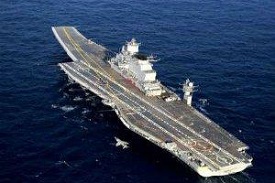
Varuna 19.1 is the first part of the Indo-French joint naval exercise. It is being held off the Goa coast from 1st to 10th May 2019.
The exercise will see the participation of the French Navy's aircraft carrier FNS Charles de Gaulle, two destroyers, FNS Forbin and FNS Provence, the frigate FNS Latouche-Treville, the tanker FNS Marne and a nuclear submarine. From the Indian side, the aircraft carrier INS Vikramaditya, destroyer INS Mumbai, the Teg-class frigate, INS Tarkash, the Shishumar- class submarine, INS Shankul, and the Deepak- class fleet tanker, INS Deepak, are taking part in the exercise.
The exercise is being conducted in two phases.
The harbour phase at Goa would include cross-visits, professional interactions and discussions and sports events
The sea phase would comprise various exercises across the spectrum of maritime operations
Varuna 19.2, the second part of the exercise, is scheduled to be held in May end in Djibouti.
About the Bilateral Naval Exercise
The bilateral naval exercise which was started in 1983 and christened as Varuna in 2001, form a vital part of the Indo-French strategic partnership. Having grown in scope and complexity over the years, this exercise exemplifies the strong relations between the two nations. It aims at developing interoperability between the two navies and fostering mutual cooperation by learning from each others best practices to conduct joint operations.
It also underscores the shared interests and commitment of both nations in promoting maritime security. The exercise is in line with the Joint Strategic Vision of India-French Cooperation in the Indian Ocean Region signed by President Emmanuel Macron and Prime Minister Narendra Modi during the former's visit to India in March 2018.
France established diplomatic relations with the newly independent India in 1947. A treaty of cession was signed by the two countries in May 1956.
France
President: Emmanuel Macron
Prime Minister: Edouard Philippe
Capital: Paris
Currency: Euro () (EUR), CFP franc (XPF)
Official/national language: French
4 - Yeti footprints sighted claims Indian Army tweet
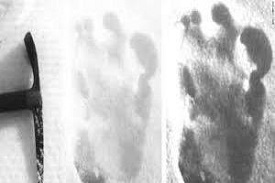
The official Twitter account of the Indian Armys Additional Directorate General of Public Information tweeted that an Indian Army mountaineering expedition team sited mysterious footprints of mythical Himalayan beast Yeti measuring 3215 inches (81 centimetres by 38 centimetres) close to Makalu Base Camp, located in North-Eastern Himalayas on 09 April 2019.
The yeti also known as Abominable Snowman or Asian
Bigfoot is a giant ape-like creature often figures in South Asian folklore.
Yetis are believed to weigh anywhere between 91 to 181 kilograms with a height of above 6 feet.
According to a report in the National Geographic, British explorer Eric Shipton captured the footprints of the Yeti in 1951 for the first time.
5 - India to purchase 10 Kamov-31 choppers from Russia for 3,600 crores

Defence Ministry Nirmala Sitharaman approved Indian Navy's proposal to acquire 10 Kamov-31 choppers from Russia at a cost of around Rs. 3,600 crore to strengthen its capability against aerial threats to its aircraft carriers and large warships.
They cleared the Rs. 3,600 crore proposal for buying around 10 Kamov-31 Airborne Early Warning and Control choppers for the aircraft carrier operations and deployment on future warships.
Indian Navy already has a fleet of 12 of these Kamov-31 choppers which sanitise the air space around the aircraft carriers and destroyers operating in open seas.
For the anti-submarine warfare operations, the Navy has a fleet of Russian Kamov-28 choppers along with the Seaking choppers which were procured long back in the 1980s and are in need of an upgrade.
About Indian Navy
Founded: 1612
Commander-in-Chief: President Ram Nath Kovind
Chief of the Naval Staff (CNS): Admiral Sunil Lanba, PVSM, AVSM, ADC
Vice Chief of the Naval Staff (VCNS): Vice Admiral G. Ashok Kumar, AVSM, VSM
Deputy Chief of the Naval Staff (DCNS): Vice Admiral M. S. Pawar, AVSM, VSM
6 - India in talks with UK for INS Vishal
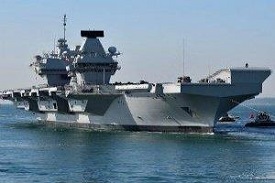
The United Kingdom is in talks with the Indian government on building a new state-of-the-art aircraft carrier along the lines of Britains HMS Queen Elizabeth as part of the ongoing Make in India negotiations.
The talks are underway for the Indian Navy to buy detailed plans for the 65,000-ton British warship to build a so-called copycat supercarrier to be named INS Vishal in 2022. If a deal can be agreed, the new warship would be built in India but UK companies could supply many of the parts.
INS Vishal
INS Vishal, meaning 'giant' in Sanskrit, also known as Indigenous Aircraft Carrier 2 (IAC-2) is a planned aircraft carrier to be built by Cochin Shipyard Limited for the Indian Navy.
It is intended to be the second aircraft carrier to be built in India after INS Vikrant (IAC-1). It will be the first supercarrier to be built in India.
In the proposed design of INS Vishal an Electromagnetic Aircraft Launch System (EMALS) CATOBAR system is under consideration.
The design stage of IAC-2 began in 2012, and was undertaken by the navys Naval Design Bureau.
On 13 May 2015, Defence Acquisition Council (DAC) allotted Rs.30 crore for initial construction planning process of INS Vishal.
Initially, the carrier was expected to enter service by the 2020s, but the expected date of completion was later postponed to the 2030s.
7 - INS Vela: Indian Navys 4th Scorpene-class made in India submarine launched
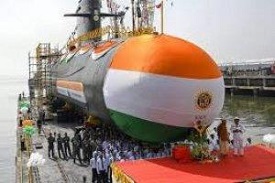
INS Vela, Indian Navys 4th Scorpene-class submarine was launched at Mazagon Dockyard in Mumbai.
This is the fourth submarine in the series of six submarines under Project 75 built by Mazagon Dock Ltd, Mumbai.
The Scorpene-class submarine has been termed as the Kalavari Class.
Project 75 is a $3.75 billion contract inked between French Company DCNS (now Naval Group) and the Mazagon Dock Ltd in 2005 for construction and transfer of technology for 6 Scorpene-class submarines.
Before Vela, Mazagon Dock Ltd has launched Kalvari, Khanderi, Karanj submarines.
About Indian Navy
Supreme Commander: President of India, Ramnath Kovind
Chief of Indian Navy: Admiral Sunil Lanba (to be retired on May 31, 2019), Karambir Singh (Designated)
8 - Indian Army is commemorating 2019 as the Year of Next of Kin to reach out to the next of kin of battle casualties
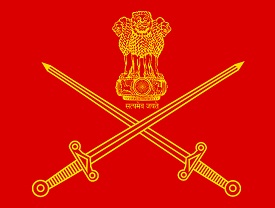
Indian Army is commemorating 2019 as the Year of Next of Kin.
As a part of this commemoration, the Army has planned to reach out to the next of kin of battle casualties, ex-servicemen and serving soldiers to resolve their pension-related issues and to let them know of their entitled financial benefits, welfare schemes.
Bipin Rawat, Army Chief General in January stated that the army will observe 2019 as the year for the next of kin. Last year, stress was laid on the disabled soldiers, while this year its on the next of kin of the deceased soldiers.
The issue has gained importance because most of the next of kin of the late soldiers were unaware of their entitled financial benefits.
The Indian Army has stated that the issue has worsened due to non-digitised personal records, and also because of complications from various policy provisions and their multifarious interpretations.
The Army will take the help of the defence ministry, Nepal Embassy, Sainik Boards, banks and welfare agencies like the Ex-Servicemen Contributory Health Scheme (ECHS) to embark upon this journey.
The nodal agency will be The Directorate of Indian Army Veterans.
On an average, every year the army suffers 150 to 200 battle casualties and 1,000 to 1,200 physical casualties, thus leading to 1,100 to 1,400 next of kin to be taken care of each year.
The first are the soldiers who retired after 2000
The next category are retirees between 1970 and 2000
The next category comprises of retirees prior to 1970.
9 - Indian Navy joins Group sail in South China Sea
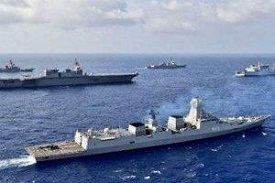
Two Indian Navy ships INS Kolkata and INS Shakti carried out a six-day long 'Group Sail' with naval ships in the South China Sea (SCS). The exercise was held from 3rd May to 9th May.
The Group Sail was aimed at deepening the existing partnership and fostering mutual understanding among participating country's navies. Four countries namely, US, India, Japan, and the Philippines participated in the naval exercise.
Six Naval combatants from participating countries included India's INS Kolkata (Guided Missile Destroyer) and INS Shakti (Fleet Support Ship), Japna's JMSDF Izumo (Helicopter Carrier) and JMSDF Murasame (Guided Missile Destroyer), Philippines's BRP Andres Bonifacio (Frigate and offshore patrol vessel) and USA' USS Williams P. Lawrence (Arleigh Burke Class guided Destroyer).
The exercise included formation exercises, communication drills, passenger transfers, cross-deck flying, replenishment runs, and exchange of Sea Riders. It showcased India's commitment to enhance interoperability with like-minded countries for ensuring a safe maritime environment.
10 - Boeing delivered 22 AH 64E Apache Guardian attack helicopters to the IAF
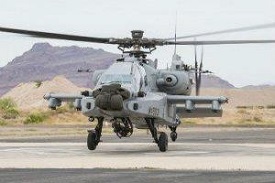
US aerospace major, Boeing, handed over 22 AH-64E Apache Guardian attack helicopters to the Indian Air Force (IAF) at the Boeing production facility in Mesa, Arizona in the U.S. The first batch of these helicopters are scheduled to be shipped to India by July 2019.
The IAF had signed a multi-billion dollar contract with the US government and Boeing Ltd in September 2015 for 22 Apache helicopters.
AH-64E Apache Guardian attack helicopters
The AH-64E Apache is a leading multi-role attack helicopter and is flown by the US Army. The helicopter has the capability to carry out precision attacks at standoff ranges and operate in hostile airspace with threats from ground. The helicopters has the ability to transmit and receive the battlefield picture.
Selected aircrew and ground crew have undergone training at the training facilities at U.S. Army base Fort Rucker in Alabama. These personnel will lead the operationalisation of the Apache fleet in the IAF.
About Indian Air Force
Founded on: October 1932
Headquarters: New Delhi
Commander-in-Chief: President Ram Nath Kovind
CAS: Air Chief Marshal Birender Singh
VCAS: Air Marshal Rakesh Kumar Singh Bhadauria
Part of: Indian Armed Forces
It aims to secure Indian airspace and to conduct aerial warfare during armed conflict
Boeing
Founder: William Boeing
Headquarters: Illinois, U.S.
The company designs, manufactures, and sells airplanes, rotorcraft, rockets, satellites, and missiles worldwide.
11 - Chinese Navy launches two Type 052D new guided missile destroyers
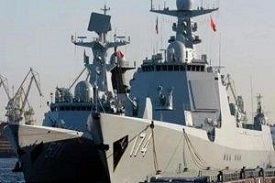
Chinese Navy commissioned two new Type 052D guided missile destroyers in Dalian, a coastal city.
They are the 19th and 20th ships in the class and are named as Tangshan and Suzhou.
China, at present 20 Type 052Ds either in active service or to be launched for service soon
The destroyers are fast and warships are operated for long distances.
It is used to accompany the aircraft carriers.
The newly developed Type 052D destroyers are the upgrades of its previous version Type 052C.
The Type 052D destroyer is a large 7500 tone destroyer. It was introduced into the Peoples Liberation Army Navy(PLAN) in March 2014.
PLAN is the Worlds fastest growing Navy as it adds new vessels to the fleet every month.
Last month, PLAN celebrated its 70th anniversary in Qingdao, China. Indian naval ships including INS Kolkata along with tanker INS Shakti participated in it.
For the first time in its history, Chinese navy has logistics bases in Djibouti in the Indian Ocean. It is developing Pakistans Gwadar port in the Arabian Sea and has also acquired Sri Lankas Hambantota port for 99 years in a debt swap.
About China
Capital: Beijing
Currency: Renminbi
President: Xi Jinping
12 - ADMM Plus concluded in Changi Naval Base, Singapore
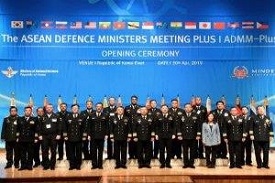
The sea phase of the ASEAN Defense Ministers' Meeting (ADMM)-Plus Maritime Security Field Training Exercise (MS FTX) in the South China Sea concluded on 13 May 2019 at RSS Singapura, also known as Changi Naval Base in Singapore. The ADMM-Plus Maritime Security Field Training Exercise was held from 30 April to 13 May. The exercise commenced on 30 April in Busan, South Korea and concluded in Singapore.
It was co-organized by Singapore and South Korea as both nations currently hold co-chairmanship of ADMM-Plus Experts' Working Group on Maritime Security. This is the fourth Maritime Security Field Training Exercise (MS FTX) was conducted under the ambit of the ADMM-Plus.
The exercise was held in two phases.
Phase I of ADMM-PLUS MS FTX was scheduled from 1 May to 3 May
Phase II was scheduled from 9 May to 12 May
Participants of the exercise
The ADMM-Plus comprises total 18 nation participants which include ten Association of Southeast Asian Nations (ASEAN) countries and other 8 includes the United States, Australia, New Zealand, South Korea, Japan, Russia, China, and India. Significance: TIt involved 10 aircraft and 19 ships with about 700 personnel from the 18 ADMM-Plus countries.
Various activities during the exercise
The exercise included maritime security drills such as boarding operations and protection of key installations. They also practiced the Code for Unplanned Encounters at Sea and conducted information-sharing to track vessels-of-interest.
Participants also conducted helicopter cross-deck landings and replenishment at sea drills as they sailed, building confidence and practical cooperation. Upon reaching the waters off eastern Singapore, boarding teams from the Brunei, India, ROK and Singapore navies simulated a search on a vessel-of-interest.
13 - DRDO conducted a successful flight test of ABHYAS
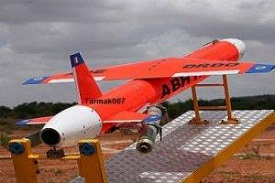
The Defence Research and Development Organisation (DRDO) conducted a successful flight test of ABHYAS, a High-speed Expendable Aerial Target (HEAT) at Balasore, Odisha. It was tracked by various Radars & Electro Optic Systems. The system performance was as per the simulations carried out.
The test proved its performance in fully autonomous waypoint navigation mode, that is, a series of unique abstract GPS points that create artificial airways. It demonstrated the capability of ABHYAS to meet the requirement of mission for a cost-effective HEAT.
About ABHYAS
It a high-speed expendable aerial target (HEAT) that offers a realistic threat scenario for practice of weapon systems. It is designed on an in-line small gas turbine engine.
It is designed for autonomous flying, with the help of an autopilot. For its guidance and navigation it uses indigenously developed Micro-Electro-Mechanical Systems (MEMS) based navigation system.
It has a Luneburg lens, that is, a spherically symmetric gradient-index lens, in the nose cone which improves the radar cross-section of target for weapons practice. It has an Acoustic Miss Distance Indicator (AMDI) to indicate the distance it missed.
Defence Research and Development Organisation (DRDO)
Formed on: 1958
Headquarters: New Delhi, India
Minister responsible: Nirmala Sitharaman
Chairman: G Satheesh Reddy
Parent agency: Ministry of Defence
DRDO is charged with the military's research and development
14 - Indian Army, Navy and Air Force hold joint exercise in Andaman and Nicobar
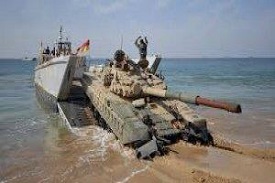
Indian Army, Navy and Air Force hold joint exercise Bull Strike at Teressa Island in Andaman and Nicobar.
The objective is to enhance their coordination in dealing with major security challenges which are currently facing the country and also to showcase joint operation capability of the three forces, Indian Army, Navy and Air Force and further enhance operation coordination.
The Total 170 troops from all three services participated and carried out para drop operations in a Combat Free Fall and Static Line mode.
About Indian Army
Founded: 1 April 1895, India
Headquarters: New Delhi
15 - Navys first full fledged SSB was inaugurated
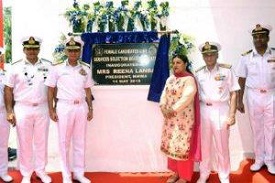
The Indian Navys first full-fledged Services Selection Board (SSB) was inaugurated by Navy Chief Admiral Sunil Lanba at Diamond Harbour near Kolkata. This is the fifth SSB of the Indian Navy and will cater for a selection of both permanent and short service commission (SSC) officers.
The SSB, Kolkata is spread over 27 acres on the banks of the Hooghly. It has the capacity to screen 5,000 officer-candidates annually.
The SSB at Diamond Harbour, Kolkata will boost the induction of officers, both men, and women, into the Indian Navy. Its location will reduce the travel time and effort for candidates from Northern and North Eastern parts of the country.
The other boards of Indian Navy are located in
Bhopal
Bengaluru
Visakhapatnam
Coimbatore
Indian Navy
Founded on: 1612
Supreme Commander: President Ram Nath Kovind
Chief of the Naval Staff (CNS): Admiral Sunil Lanba
Vice Chief of Naval Staff (VCNS): Vice Admiral G Ashok Kumar
Deputy Chief of Naval Staff (DCNS): Vice Admiral MS Pawar
It is a part of the Indian Armed Forces. It is responsible to safeguard the nation's maritime borders.
16 - India to set up military space agency headquartered at Bengaluru

India is to set up its military space agency headquartered at Bengaluru with the ace fighter pilot Air Vice Marshal SP Dharkar as its likely head. AVM Dharkar is an ace fighter pilot and is presently looking after the air defence operations of an important command along the borders. The tri-services defence space agency is expected to get operational by June 2019.
The tri-services Space agency is likely to command all the space assets of the three services including the A-SAT capability, which can be used to destroy enemy space-based satellites and other assets.
Why Bengaluru?
Bengaluru is chosen as the location of the space agency, as it is also the headquarters of ISRO, which manages all types of space programmes of the country.
Tri-services Special Operations Division
Ace Special Forces operative and Sri Lanka war veteran Maj Gen AK Dhingra has been appointed as the first head of Country's first tri-services Special Operations Division comprising commandos from all three services.
The Armed Forces Special Operations Division has been set up by the government to undertake joint operations by three services and will have elements from the Army's Parachute Regiments SF, Marine Commandos (MARCOS) of the Navy and the Garud Commandos of the Indian Air Force.
Rear Admiral Mohit Gupta has been appointed as the head of the Defence Cyber Agency set up in Delhi with people from all three services.
17 - Indian Coast Guard Ship Vigraha decommissioned
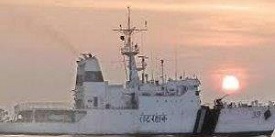
The Indian Coast Guard ship (ICGS) Vigraha was decommissioned at Visakhapatnam, Andhra Pradesh.
The decommissioning ceremony was attended by eight former Commanding Officers who had been at the helm of the ship, along with former and the present crew.
About ICGS Vigraha Service
It is a frontline offshore patrol vessel (OPV).
It was commissioned into service on April 12, 1990.
It has played an instrumental role in protecting east coast of India for 29 years of service from 1990 to 2019.
Builder: It was the seventh OPV built by Mazagon Dock.
It was first of its class among other OPVs of third series.
It was also leased to Sri Lankan Navy on a dry lease from August 2008 to January 2011.
Later, it was re-inducted into Indian Coast Guard (IGC) in January 2019 after which it was continuously based at Visakhapatnam.
Participated: In major coast guard operations involved humanitarian assistance and disaster relief, pollution response, anti-poaching, repatriation, joint exercises and search and rescue.
18 - Padmaja appointed as the next High Commissioner of India to the Republic of Nauru

Ministry of External Affairs, Government of India, announced the appointment of Ms. Padmaja as the next High Commissioner of India to the Republic of Nauru with residence in Suva.
She is currently serving as the High Commissioner of India to the Republic of Fiji.
She is set to take up her responsibility soon.
About Nauru
Capital: No Official capital, but Government offices are located at Yaren District
Currency: Australian Dollar
President: Baron Waqa
19 - Twenty Sixth edition of Singapore India Maritime Bilateral Exercise titled SIMBEX were held in Singapore
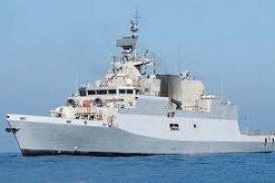
INS Kolkata Designed and built in India, it is an advanced stealth destroyer capable of engaging multiple threats from the air, sea and underwater and INS Shakti is a fleet support ship that provides fuel, provisions and munitions to warships at sea the 2 warships of the Indian Navy participated in a 3-day Asia Pacific naval and maritime event titled the International Maritime Defence Exhibition Asia (IMDEX Asia-2019) (it commenced on May 14, 2019) held in Changi Exhibition Centre, Singapore.
Some of Indias leading engineering and ship building firms, including Larsen & Toubro and BrahMos participated in it.
Deputy Chief of Naval Staff, Vice-Admiral M S Pawar, led the delegation to the Asia Pacific gathering of the event.
After IMDEX, Indian Naval ships together with an Indian Navy surveillance aircraft P8I have participated in the 26th edition of Singapore India Maritime Bilateral Exercise (SIMBEX).
SIMBEX scheduled from 16th May 2019 to 22th May 2019, is the longest uninterrupted naval exercise that India has with any other nation.
The 25th edition SIMBEX took place in the Andaman Sea and Bay of Bengal from 11th November to 21st November 2018.
Singapores Minister of Defence, Dr Ng Eng Hen, witnessed it.
Thus, this 26th edition of SIMBEX is taking place 6 months after the last edition.
20 - Indian Navy conducted missile tests to boost its anti air warfare capabilities
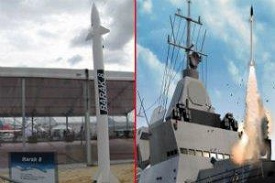
The Indian Navy conducted significant missile tests boosting its anti-air warfare capabilities. The first cooperative engagement firing of the Medium Range Surface to Air Missile (MRSAM) or Barak-8 was held on the Western Seaboard.
The firing was undertaken on the western seaboard by the INS Kochi and the INS Chennai wherein the missiles of both ships were controlled by one ship to intercept different aerial targets at extended ranges. Interestingly, one of the ships controlled the complete mission through its automated data links. The firing trials were carried out by Indian Navy, Defence Research and Development Organisation (DRDO) and the Israel Aerospace Industries (IAI).
This was achieved by network-centric operations that helped to combine the capabilities of all military platforms in a formation. The MRSAMs are fitted onboard the Kolkata Class Destroyers. These would also be fitted on all future major warships of the Indian Navy.
About Barak-8
Barak-8 also known as LR-SAM or as MR-SAM is an Indian-Israeli surface-to-air missile (SAM), designed to defend against any type of airborne threat including aircraft, helicopters, anti-ship missiles, and UAVs as well as ballistic missiles, cruise missiles, and combat jets. Both maritime and land-based variants of the system exist.
It was jointly developed by Israel Aerospace Industries (IAI), India's Defence Research & Development Organisation (DRDO), Israel's Administration for the Development of Weapons and Technological Infrastructure, Elta Systems, Rafael and other companies. Bharat Dynamics Limited (BDL) produces the missiles.
Barak-8 is a two-way data link (GPS S-band), Active Radar Seeker Missile, 360-degree coverage, Vertical Launch, Multiple Simultaneous Engagements, Point defence anti-ballistic missile.
Medium Range Surface to Air Missile (MRSAM)
It has an intercept range between 70-100 km.
MRSAM is equipped with a modern ground-based multi-function 3D rotating active phased array radar to provide high-quality Air Situation Picture (ASP) and weapon support under adverse operational and environmental conditions.
It will be capable of operating at the extreme condition of -30deg C and an altitude of 3.5 km.
21 - India delivered the first pair of Mi 24 attack helicopters to Afghan Air Force
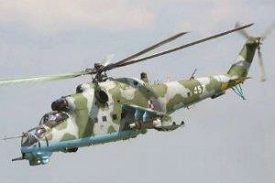
India delivered the first pair of Mi-24 attack helicopters as a replacement to the Afghan Air Force. The helicopters were handed over to the Acting Defence Minister Asadullah Khalid by the Indian Ambassador to Afghanistan Vinay Kumar at the Kabul Air Force base. The helicopters were Purchased from Belarus.
Aim
The Mi-24 helicopters shall boost the capability of the Afghan Air Force and enhance the effectiveness of the Afghan National Defence and Security Force in combating the scourge of terrorism.
India and Afghanistan in the past −
The helicopters are a replacement for the four attack helicopters previously gifted by India to Afghanistan in 2015. India has been one of the largest donors to Afghanistan and has committed $3 billion in aid since 2001.
It is also said that two more of the same type will be purchased and supplied to the Afghan Air Force in order to make the aerial operations more effective.
Mi-24
National origin: Soviet Union/Russia
Manufacturer: Mil
First flight: 19 September 1969
Introduced in: 1972
Mi-24 is a large helicopter gunship, attack helicopter, and low-capacity troop transport that can contain eight passengers.
It has been designed to take on fortified enemy positions and locations prone.
22 - Tech Mahindra signed a defence contract worth Rs.300 crore with Indian Navy

IT major, Tech Mahindra has signed a defence contract worth Rs.300 crore with Indian Navy. This contract is its biggest agreement to date. The IT major will implement RFID-based access control system across all naval bases and ships as part of 'Armed Forces Secure Access Card (AFSAC)' Project. AFSAC will replace the existing paper-based identity card for all Navy personnel, including dependents and ex-servicemen. As part of the AFSAC Project, Tech Mahindra will implement RFID (Radio Frequency Identification) based access control system across all naval bases and ships.
AFSAC Project
The Mumbai-based company will develop a secure application to manage the access control devices, network devices, and the AFSAC card through a data centre.
The security of Indian Naval establishments against unauthorized access is a thrust area and the AFSAC Project will be an important step towards achieving this aim.
Scheduled to be implemented over the next two years, the project will ensure smooth issuance, handling, administration, management and life-cycle support of AFSAC Cards on turnkey basis.
This project further cements the company's role as one of the leading system integrators globally. Tech Mahindra is already working with entities like Coal India, India Ports Association, Kanpur Smart City and others
Tech Mahindra
Type: Public
Founded on: 24 October 1986
Chairman: Anand Mahindra
MD & CEO: C.P. Gurnani
Services: Outsourcing, Consulting, Managed services
23 - IMCOR 2019 began in Port Blair at Andaman and Nicobar Command
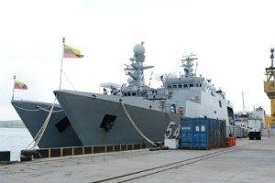
The 2019 Indo-Myanmar coordinated patrol (IMCOR) is taking place from 20 May to 28 May 2019 in Port Blair at Andaman and Nicobar Command. This is the 8th edition of the coordinated patrol (CORPAT) between India and Myanmar.
CORPAT
The coordinated patrol (CORPAT) initiative between the Indian Navy and Myanmar Navy seeks to address issues of terrorism, human trafficking, poaching, illegal fishing, drug trafficking and other illegal activities harmful to interest of both nations.
The CORPAT series was first started in Mar 2013. Since then it has fostered improved professional interaction and enhanced mutual understanding between the two navies for maritime interoperability.
MCOR 2019
The Indo-Myanmar coordinated patrol IMCOR began on 20th May 2019. For the Opening Ceremony of 2019 edition, Myanmar Navy Ships arrived on 20 May 2019 in Port Blair at Andaman and Nicobar Command.
It will be undertaken by Myanmar ships viz. UMS King TabinShweHtee (773) and UMS Inlay (OPV54) with Indian Naval Ship, INS Saryu.
The exercise includes the patrolling effort by participants will be augmented by Maritime Patrol Aircraft (MPA) from both the navies. The ships deployed would patrol along International Maritime Boundary Line (IMBL) between the two countries thus, covering a distance of about 725 Kms over a period of four days.
During the sea phase of coordinated patrol, prior to Closing Ceremony' of CORPAT onboard Myanmar Naval Ship, the deployed ships will also undertake joint drills and maneuvers.
24 - IAF successfully test fired the aerial version of the supersonic BrahMos cruise missile
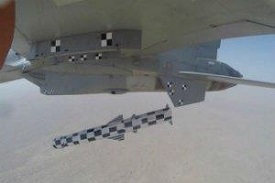
The Indian Air Force (IAF) successfully test fired the aerial version of the supersonic BrahMos cruise missile from a Su-30 MKI fighter aircraft at the Andaman and Nicobar Islands. The test marked a major milestone to enhance its precision strike capability. The capability of the missile coupled with the superlative performance of the Su-30MKI aircraft gives the IAF the desired strategic reach.
Supersonic BrahMos cruise missile
The supersonic BrahMos cruise missile is a 2.5 tonne air-to-surface missile and it has a range of around 300 km, and it will significantly enhance the IAF's combat capability. The BrahMos cruise missile travels at a speed of Mach 2.8, nearly three times that of sound. The missile follows the desired trajectory before directly hitting the land target.
The BrahMos missile provides the IAF a much-desired capability to strike from large stand-off ranges on any target at sea or on land with pinpoint accuracy by day or night and in all weather conditions.
IAF's record
The IAF became the first air force in the world to have successfully fired an air-launched 2.8 Mach surface attack missile of this category on a sea target on November 22, 2017. BrahMos cruise missile, which was test now, was the second such live launch of the weapon.
Developers of BrahMos, 2.8 Mach surface attack missile
The software development of the aircraft was undertaken by IAF engineers, while the Hindustan Aeronautics Ltd carried out mechanical and electrical modifications on it.
Despite such complex integrations, IAF, Defence Research and Development Organisation (DRDO), BrahMos Aerospace Pvt Ltd and HAL have proven the capability by dedicated and synergetic efforts.
BrahMos Aerospace, an India-Russian joint venture, produces the supersonic cruise missile that can be launched from submarines, ships, aircraft, or from land platforms.
Further expansion
The IAF has already begun work to integrate the BrahMos supersonic cruise missile on 40 Sukhoi combat aircraft. Once the project to integrate the weapon on the combat fleet is over, the IAF capability to strike from large stand-off ranges on any target in sea or land is expected to go up manifold.
25 - Flight Lieutenant Bhawana become the countrys first woman fighter to undertake to missions by day
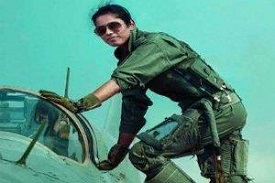
Flight Lieutenant Bhawana Kanth has become the country's first woman fighter be qualified to undertake to missions by day on a fighter aircraft in the IAF. This comes after she completed her day operational syllabus as a fighter pilot on the MiG-21 Bison supersonic aircraft.
Bhawana, from Darbhanga in Bihar, has become the first of the three in her batch of women fighter pilots to successfully complete her day operational syllabus on the MiG-21s at the Nal airbase in Bikaner. The other two women fighter pilots in the batch are Flight Lieutenants Avani Chaturvedi and Mohana Singh.
IAF's induction of women fighter
The IAF has so far inducted six women into its fighter flying stream on an experimental basis for five years. It took around Rs.15 crore to train a single fighter pilot.
IAF had for long resisted inducting women in the combat stream because it felt it would disrupt tight fighter-flying schedules if they got married and had children.
IAF's training for the 3 fighters
IAF posted the women fighter batch to MiG-21 squadrons rather than the easier-to-handle modern fighters like Sukhoi-30MKls or Mirage-2000s to ensure they undertake air defence missions over Indian territory in the event of war (MiG-21s are basically meant to intercept incoming enemy aircraft), and not go for strike missions deep into enemy territory.
The next woman fighter pilot to undertake missions by day is Flight Lieutenant Avani Chaturvedi. Flight Lieutenant Mohana Singh is also expected to reach this stage soon. The three women pilots were commissioned into the IAFs fighter stream in June 2016.
26 - DRDO successfully flight tested Inertial Guided Bomb from an Su-30 MKI aircraft
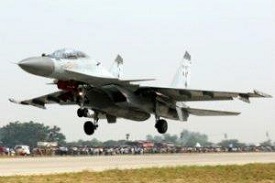
Defence Research and Defence Organisation (DRDO) successfully flight tested a 500 kg class Inertial Guided Bomb from a Su-30 MKI aircraft at the Pokhran test range in Rajasthan.
The indigenously-developed guided bomb achieved the desired range and hit the target at a distance of 30 km away with high precision. All the mission objectives have been met. The weapon system is capable of carrying different warheads. India has carried out several such trials in 2019. DRDO is engaged in developing defence technologies covering various disciplines.
The test firing of the guided bomb comes two days after the Indian Air Force (IAF) successfully test fired the aerial version of the supersonic BrahMos cruise missile from a Sukhoi jet at the Andaman and Nicobar Islands. The 2.5-tonne air-to-surface missile has a range of around 300 km, and it will significantly enhance the IAF's combat capability.
27 - DRDO successfully test-fired the new version of the Akash
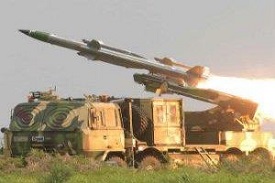
The Defence Research Development Organization (DRDO) successfully test-fired the new version of the Akash surface-to-air defence missile system with a new indigenously-developed seeker in Balasore off the Odisha coast on 27 May. This is the second successful test of the missile. The medium range multi-target engagement capable missile was developed as part of the Integrated Guided-Missile Development Programme (IGMDP) other than Nag, Agni, Trishul, and Prithvi missiles.
About Akash
The supersonic missile has a range of around 25 km and up to the altitude of 18,000 metres. The missile uses high-energy solid propellant for the booster and ramjet-rocket propulsion for the sustainer phase. The missile system is said to be highly mobile.
Several variants of the missile, Akash MK1, Akash-MK2, with improved accuracy and higher ranges are under development by the DRDO.
India's missile system
The missile system was formally inducted into the IAF on July 10, 2015, and in the Army on May 5, 2015. In September that year, the Defence Acquisition Council (DAC) cleared seven additional squadrons of the missile for the IAF.
However, it had been bogged in controversies with a Comptroller and Auditor General (CAG) report in 2017 stating that 30% of the missiles failed when tested.
The Army too had said in 2017 that the missile did not meet its operational requirements due to higher reaction time.
28 - AN-32 aircraft to fly on blended aviation fuel containing up to 10% of indigenous bio-jet fuel
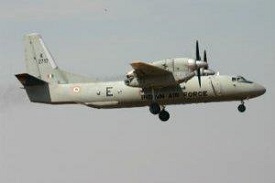
The Russian made AN-32 aircraft, IAFs formidable workhorse has formally been certified to fly on blended aviation fuel containing up to 10% of indigenous bio-jet fuel.
P.Jayapal, Chief Executive of the Centre for Military Airworthiness and Certification (CEMILAC) handed over the approval certificate to Air Commodore Sanjiv Ghuratia VSM, Air Officer Commanding at the aero-engine test facilities at Chandigarh.
This is a huge step in promoting the Make in India mission as this bio-fuel would be produced from Tree Borne Oils (TBOs) sourced from tribal areas and farmers, augmenting their income substantially.
Bio-jet fuel and IAF
The IAF has undertaken a series of evaluation tests and trials with this green aviation fuel for the last one year. The scope of these checks was in consonance with international aviation standards. IAF followed meticulous testing standards for the use of indigenous bio-jet fuel by the IAF.
Introduction of Biofuel
The indigenous bio-jet fuel was first produced by the CSIR-IIP lab at Dehradun in 2013, but could not be tested or certified for commercial use on aircraft due to lack of test facilities in the civil aviation sector. On 27 July 2018, Chief of the Air Staff Air Chief Marshal BS Dhanoa had formally announced IAFs intention to permit the use of all its resources for testing and certifying the indigenous fuel. Since then, IAFs flight test crew and engineers have been evaluating the performance of this fuel against international standards.
29 - India's first all woman crew flies Mi - 17 V5 medium lift helicopter
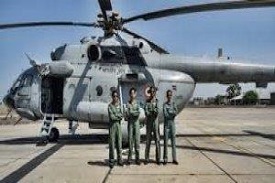
Three women officers of Indian Air Force were part of India's first all-women crew to fly a medium-lift helicopter Mi-17 V5.
Flight Lieutenant Parul Bhardwaj (Captain), Flying Officer Aman Nidhi (co-pilot) and Flight Lieutenant Hina Jaiswal (Flight Engineer) were three women IAF officers flew the chopper, which took off from a forward air base in South Western air command.
All three women officers flew a Mi-1 7 V5 helicopter for Battle Inoculation Training mission.
Under this mission, the helicopter had taken off and landed from restricted areas at a forward airbase in South Western air command.
Flight Lieutenant Parul Bhardwaj became the first woman pilot to fly the Mi-17 V5.
Flight Lieutenant Hina Jaiswal became the first woman flight engineer of the IAF.
Flying officer Aman Nidhi from Jharkhand also became the first woman IAF pilot from the state.
About Indian Air Force
Founded: 8 October 1932
Commander-in-Chief: President Ram Nath Kovind
Chief of the Air Staff (CAS): Air Chief Marshal Birender Singh
30 - Military tribunal allows Karambir Singh to take charge as new Navy Chief
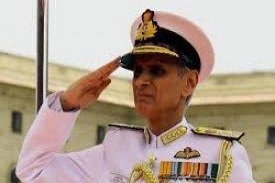
The Armed Forces Tribunal made Vice Admiral Karambir Singh to become the next Navy Chief while it deferred for four weeks the matter of Vice Admiral Bimal Verma which seeks to quash Singhs appointment.
Karambir Singh, who is the Commander-in-Chief of the Eastern Naval Command, will take over as the Navy Chief on 31st May 2019.
He was commissioned into the Indian Navy in July 1980 and earned his wings as a helicopter pilot in 1982.
He has extensive experience with the HAL Chetak, Kamov Ka-25, and Kamov Ka-28 helicopters
About Karambir Singh
Born: 3 November 1959
Commands held : Chief of Naval Staff
Eastern Naval Command
INS Delhi
INS Rana
INS Vijaydurg
ICGS Chand Bibi
Awards: Param Vishisht Seva Medal
Ati Vishisht Seva Medal
31 - IAF Golden Arrows 17 Squadron to be first Rafale combat aircraft unit
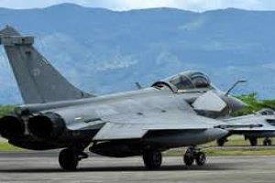
The Indian Air Force(lAF) and Indian Space Research Organization(lSRO) signed an agreement with the selection of crew and training for Gaganyaan Programme.
It was signed between Air Vice Marshal(AVM) RGK Kapoor, Assistant Chief of Air Staff(ACAS) Operations (Space)
IAF and Shri R Hutton, Project Director of Gaganyaan Programme.
The Institute of Aerospace Medicine ('AM) will lead the selection and training of astronauts on behalf of IAF. ii. Gaganyaan Programme was announced the Prime Minister Narendra Modi on August 1 5, 2018.
Rs. 10,000 crore worth mission is scheduled to be launched in December 2021 and as a part of it, ISRO had set up the Human Spaceflight Centre at its headquarters in Bengaluru on January 30.
About IAF
Headquarters: New Delhi
Founded: October 8, 1932
Role: Aerial warfare Attack: Jaguar, MiG-27, Harpy
Fighters: Sukhoi Su-30MKl, Dassault Mirage 2000, Mikoyan MiG-29, Mikoyan-Gurevich MiG-21, HAL Tejas Chief of the Air Staff. Birender Singh Dhanoa
About ISRO
Headquarters: Bengaluru
Founder: Vikram Sarabhai
Director: K Sivan
32 - Air Chief Marshal B S Dhanoa received baton of Chairman COSC
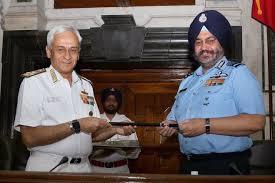
Chief of the Air Staff Air Chief Marshal Birender Singh Dhanoa received the baton of Chairman, Chiefs of Staff Committee from outgoing Chairman COSC and Chief of the Naval Staff Admiral Sunil Lanba,
Air Chief Marshal Birender Singh Dhanoa will be the Chairman COSC with effect from May 31, 2019, consequent to relinquishment of charge by Admiral Sunil Lanba upon superannuation.
Air Chief Marshal Birender Singh Dhanoa, an alumnus of Rashtriya Indian Military College and the National Defence Academy, was commissioned in the Flying Branch of Indian Air Force in June 1978.
He is an experienced fighter pilot and a qualified CAT A Flying Instructor with over 3000 hours of flying experience to his credit.
The Air Chief Marshal has mainly flown the MiG-21 aircraft with flying experience across the entire spectrum of fighter aircraft of the Indian Air Force.
Admiral Sunil Lanba is proceeding on retirement on May 31, 2019, after a distinguished career spanning over four decades.